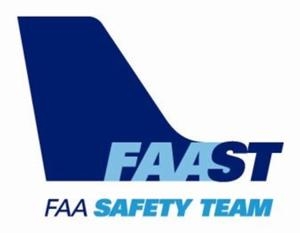Do You Have A Pilot License Or A Pilot Certificate; Let’s See What The FAA Says
We found this information in a recent FAA Safety Briefing article and thought we would pass it along for our readers to think about. Sometimes FAA pilot certification seems to be a bit complicated and perhaps it is. In the article, we are reminded that the term license does not appear in anything that has to do with certifying pilots.

CERTIFICATE = PRIVILEGE LEVEL
The authorizing document that the FAA issues is an airman certificate, which Merriam-Webster defines as “a document certifying that one has fulfilled the requirements of, and may practice in, a field.”
A pilot can be certificated to fly aircraft at one or more of the following privilege levels: Unmanned Aircraft Systems (UAS), Student, Sport, Recreational, Private, Commercial, and Airline Transport Pilot (ATP).
RATING = OPERATING PRIVILEGE
A rating is “an authorization that, as part of a certificate, sets forth special conditions, privileges, or limitations.” Ratings specify what, and/or how, the pilot is qualified to fly.
Except for pilots at the student and sport certification levels, pilots at each certificate level are rated to fly aircraft in at least one specific category and, if applicable, class. A typical rating on a private pilot certificate is “airplane single engine land.” If you complete additional training and testing requirements for a multi-engine class rating, your private pilot certificate will then have ratings for “airplane single and multi-engine land.”
Ratings can be added to a certificate when the pilot qualifies for a certain operating privilege, such as an instrument rating, applicable to a specific aircraft category and class. Some examples of category and class include airplane single-engine land, glider, rotorcraft-helicopter, etc.
ENDORSEMENT = COMPLETION OF SPECIFIED TRAINING
An endorsement attests to the successful completion of ground and/or flight training required for specific operating privileges, or for airman testing and certification. Endorsements and recommendations are normally provided in the pilot’s logbook. The endorsements required by FARs part 61 and 141 affect many airman certificates and privileges:
- Student Pilots - Because student pilot certificates do not include aircraft category and class ratings, operating privileges and limitations for solo flight are provided exclusively through instructor endorsements that specify the make and model. Student pilot endorsements often include certain weather requirements and other operating limitations.
- Sport Pilots - Like a student pilot certificate, a sport pilot certificate is issued without aircraft category and class ratings. Logbook endorsements specify the category, class, make, and model of aircraft that the sport pilot is authorized to fly as pilot-in-command.
- Testing for Certificate or Rating - To take a knowledge or practical test for most pilot certificates and ratings, the applicant must have endorsements attesting to knowledge, flight proficiency, aeronautical experience, and practical test preparation.
- Recurrent Training - There are several areas where recurrent training gets involved, but for general aviation pilots, the most common one is the flight review.
- Aircraft Characteristics - The requirement for a Type Rating is limited to large (greater than 12,500 pounds maximum gross takeoff weight) and turbojet-powered aircraft. However, certain small and piston-powered aircraft have characteristics that require additional training and specific endorsements. These endorsements include those for complex airplanes, high performance, high altitude, tailwheel, and glider ground operations.
And by the way, although we naturally think of flight instructors as pilots, flight instructor certificates are issued separately and are not called pilot certificates. However, a Commercial or ATP-level pilot certificate is a prerequisite for the issuance and the privileges of a flight instructor certificate.
So, that’s the long answer to a short question. You drive a car with a license; you fly an airplane with a certificate.
 ANN's Daily Aero-Term (04.24.24): Runway Lead-in Light System
ANN's Daily Aero-Term (04.24.24): Runway Lead-in Light System ANN's Daily Aero-Linx (04.24.24)
ANN's Daily Aero-Linx (04.24.24) Aero-FAQ: Dave Juwel's Aviation Marketing Stories -- ITBOA BNITBOB
Aero-FAQ: Dave Juwel's Aviation Marketing Stories -- ITBOA BNITBOB Classic Aero-TV: Best Seat in The House -- 'Inside' The AeroShell Aerobatic Team
Classic Aero-TV: Best Seat in The House -- 'Inside' The AeroShell Aerobatic Team Airborne Affordable Flyers 04.18.24: CarbonCub UL, Fisher, Affordable Flyer Expo
Airborne Affordable Flyers 04.18.24: CarbonCub UL, Fisher, Affordable Flyer Expo



